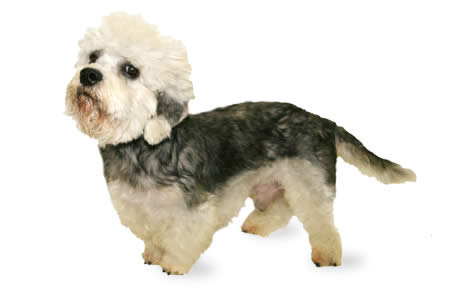Dandie Dinmont Terriers originally were bred to hunt otter and badger. Nicknamed the gentleman of the terrier family, they’re calm and reserved, yet retain their terrier tenacity and love of the hunt.
Even though these are rare purebred dogs, some may still end up in the care of shelters or rescues. Consider adoption if this is the breed for you.
The Dandie Dinmont Terrier’s small size and moderate exercise needs make them well suited to both city and country homes. Independent yet easy-going and affectionate, these dogs provide plenty of love to their humans without demanding too much in the way of exercise or grooming needs. Still, they don’t appreciate being left alone for long hours of the day. If you can give this dog plenty of love and attention, you can expect to get tenfold the devotion in return.
ogTime recommends this carrier for traveling with your small Dandie Dinmont Terrier. You should also pick up this dog brush and massager for your pup!
See below for complete list of Dandie Dinmont Terrier characteristics!
Dandie Dinmont Terrier Dog Breed Pictures
Adaptability
-
Adapts Well To Apartment Living
Looking for the best dog for your apartment? Contrary to popular belief, the suitability of dogs who adapt well to apartment living goes beyond its size. Apartment dwellers have a myriad of dog breeds to choose from as potential companions, with various factors to consider. Some large breeds can adapt well to apartment living and have lower activity levels. Others may require more space and possess higher energy levels. On the other hand, certain small dog breeds with abundant energy can still find contentment with indoor playtime or brisk walks.
However, when selecting a dog that adapts well apartments, it is essential to prioritize your neighbors. Opting for a pet that doesn’t excessively bark and behaves politely when encountering others in shared spaces like is crucial for maintaining a harmonious apartment environment.
In high-rise settings, it’s worth noting that numerous small dogs may exhibit a propensity for high energy and frequent barking. This makes them less suitable for apartment living. Therefore, desirable qualities in an apartment dog encompass being quiet, low-energy, and displaying polite behavior towards other residents.
Factors To Consider When Choosing A Dog For An Apartment
When considering dogs that adapt well to apartments, size alone should not be the sole determinant. Apartment dwellers have a wealth of dog breeds to choose from as potential furry companions. It’s important to remember that the size of your living space is just one factor to consider. While some larger breeds can adapt well to apartment living, with lower, others may require more space and have higher energy levels, making them less suitable for smaller apartments. Conversely, certain small dog breeds with higher energy levels can still thrive in apartments, finding contentment through indoor playtime or brisk walks. However, it is crucial to consider your neighbors’ comfort when selecting a dog. Opt for a pet that doesn’t bark excessively and behaves politely when interacting with others in shared spaces.
Therefore, it’s important to prioritize qualities such as being quiet, low-energy, calm indoors, and exhibiting good manners when living in close proximity to other residents. By considering these factors, you can find a dog that will adapt well to apartment living and create a harmonious living environment for everyone involved.
-
Good For Novice Owners
Some dogs are simply easier than others; they take to training better and are fairly easygoing. They’re also resilient enough to bounce back from your mistakes or inconsistencies.
Dogs who are highly sensitive, independent thinking, or assertive may be harder for a first-time dog parent to manage. You’ll get your best match if you take your dog-owning experience into account as you choose your new pooch.
If you’re new to dog parenting, take a look at 101 Dog Tricks and read up on how to train your dog!
-
Sensitivity Level
Some dogs will let a stern reprimand roll off their backs, while others take even a dirty look to heart. Low-sensitivity dogs, also called “easygoing,” “tolerant,” “resilient,” and even “thick-skinned,” can better handle a noisy, chaotic household, a louder or more assertive owner, and an inconsistent or variable routine. Do you have young kids, throw lots of dinner parties, play in a garage band, or lead a hectic life? Go with a low-sensitivity dog.
-
Tolerates Being Alone
Some breeds bond very closely with their family and are more prone to worry or even panic when left alone by their owner. An anxious dog can be very destructive–barking, whining, chewing, and otherwise causing mayhem. These breeds do best when a family member is home during the day or if you can take the dog to work.
-
Tolerates Cold Weather
Breeds with very short coats and little or no undercoat or body fat, such as Greyhounds, are vulnerable to the cold. Dogs with a low cold tolerance need to live inside in cool climates and should have a jacket or sweater for chilly walks. You can find a great jacket for your dog here!
-
Tolerates Hot Weather
Dogs with thick, double coats are more vulnerable to overheating. So are breeds with short noses, like Bulldogs or Pugs, since they can’t pant as well to cool themselves off. If you want a heat-sensitive breed, your dog will need to stay indoors with you on warm or humid days, and you’ll need to be extra cautious about exercising your dog in the heat.
All-around friendliness
-
Affectionate With Family
When it comes to unconditional love and unwavering loyalty, few animals can rival the affectionate nature of dogs. These remarkable creatures have earned their reputation as man’s best friend, and many breeds are particularly renowned for their love and devotion to their families. With their warm hearts and wagging tails, affectionate family dogs enrich the lives of their owners in countless ways.
One such breed known for its affectionate demeanor is the Golden Retriever. With their gentle temperament and friendly disposition, Golden Retrievers form deep bonds with their families. They eagerly participate in family activities, whether it’s a game of fetch in the yard or cuddling on the couch during a movie night. Their expressive eyes and ever-wagging tails are a testament to the joy they feel in the presence of their loved ones.
Another family-favorite breed is the Labrador Retriever. Renowned for their playful and patient nature, Labradors are excellent companions for children and adults alike. They readily engage in playtime with the kids, showcasing their boundless energy and enthusiasm. But when the day winds down, they seamlessly transition into loving and gentle cuddle buddies, comforting their family members with their warm presence.
Beyond specific breeds, mixed-breed dogs also have a special place in the hearts of families seeking affectionate companions. The shelter dogs, in particular, form deep connections with their adoptive families. They seem to understand the second chance they’ve been given and repay it with endless love and gratitude.
How To Know If A Dog Is Good With Families
The affectionate nature of family dogs extends beyond play and cuddles. Dogs have a remarkable ability to sense their owner’s emotions, offering comfort and support during difficult times. Whether it’s a wagging tail after a long day at work or a sympathetic nuzzle during moments of sadness, they prove time and again that they are attuned to their family’s needs.
It is important to note that not all dogs of the same breed will be equally affectionate. Some dogs may be more independent or aloof, while others may be more clingy or demanding of attention. The best way to find out how affectionate a dog is is to meet them in person and interact with them.
-
Kid-Friendly
Being gentle with children, sturdy enough to handle the heavy-handed pets and hugs they can dish out, and having a blasé attitude toward running, screaming children are all traits that make a kid-friendly dog. You may be surprised by who’s on that list: Fierce-looking Boxers are considered good with children, as are American Staffordshire Terriers (which are considered Pit Bulls). Small, delicate, and potentially snappy dogs such as Chihuahuas aren’t always so family-friendly.
**All dogs are individuals. Our ratings are generalizations, and they’re not a guarantee of how any breed or individual dog will behave. Dogs from any breed can be good with children based on their past experiences, training on how to get along with kids, and personality. No matter what the breed or breed type, all dogs have strong jaws, sharp pointy teeth, and may bite in stressful circumstances. Young children and dogs of any breed should always be supervised by an adult and never left alone together, period.
-
Dog Friendly
Friendliness toward dogs and friendliness toward humans are two completely different things. Some dogs may attack or try to dominate other dogs, even if they’re love-bugs with people; others would rather play than fight; and some will turn tail and run. Breed isn’t the only factor. Dogs who lived with their littermates and mother until at least six to eight weeks of age and who spent lots of time playing with other dogs during puppyhood, are more likely to have good canine social skills.
-
Friendly Toward Strangers
Stranger-friendly dogs will greet guests with wagging tails and nuzzles; others are shy, indifferent, or even aggressive. However, no matter what the breed, a dog who was socialized and exposed to lots of different types, ages, sizes, and shapes of people as a puppy will respond better to strangers as an adult. Remember that even friendly dogs should stay on a good, strong leash like this one in public!
Health And Grooming Needs
-
Amount Of Shedding
If you’re going to share your home with a dog, you’ll need to deal with some level of dog hair on your clothes and in your house. However, shedding does vary greatly among the breeds. Some dogs shed year-round, some “blow” seasonally, some do both, and some shed hardly at all. If you’re a neatnik, you’ll need to either pick a low-shedding breed or relax your standards. To help keep your home a little cleaner, you can find a great de-shedding tool here!
-
Drooling Potential
Drool-prone dogs may drape ropes of slobber on your arm and leave big, wet spots on your clothes when they come over to say hello. If you’ve got a laid-back attitude toward slobber, fine; but if you’re a neatnik, you may want to choose a dog who rates low in the drool department.
-
Easy To Groom
Some breeds are brush-and-go dogs; others require regular bathing, clipping, and other grooming just to stay clean and healthy. Consider whether you have the time and patience for a dog who needs a lot of grooming, or the money to pay someone else to do it.
-
General Health
Due to poor breeding practices, some breeds are prone to certain genetic health problems, such as hip dysplasia. This doesn’t mean that every dog of that breed will develop those diseases; it just means that they’re at an increased risk.
If you’re adopting a puppy, it’s a good idea to find out which genetic illnesses are common to the breed you’re interested in. You may also want to ask if your shelter or rescue has information about the physical health of your potential pup’s parents and other relatives.
-
Potential For Weight Gain
Some breeds have hearty appetites and tend to put on weight easily. As in humans, being overweight can cause health problems in dogs. If you pick a breed that’s prone to packing on pounds, you’ll need to limit treats, make sure they get enough exercise, and measure out their daily food servings into regular meals rather than leaving food out all the time.
Ask your vet about your dog’s diet and what they recommend for feeding your pooch to keep them at a healthy weight. Weight gain can lead to other health issues or worsen problems like arthritis.
-
Size
Get ready to meet the giants of the doggy world! Large dog breeds aren’t just big balls of fluff, they’re like loving, oversized teddy bears on a mission to steal your heart. Need some convincing? Let’s dive into the awesome benefits of owning one!
First things first, these pooches are a living security system! With their impressive size and thunderous barks, they’ll have any would-be intruder running for the hills. Talk about peace of mind! Plus, who needs an alarm when you’ve got a furry giant protecting your castle?
But that’s not all. Large dog breeds are all about loyalty and devotion. They’ll stick by your side through thick and thin, becoming your most dedicated bestie. Their love knows no bounds! When you have a giant fluffball showing you unconditional love, you’ll feel like the luckiest human on the planet.
Now, let’s talk about their talents. These big fellas are the ultimate working partners. With brains and brawn, they’re up for any challenge. From search and rescue missions to lending a helping paw to those in need, these dogs are superheroes in fur coats. They’ll make you proud every step of the way!
Don’t let their size fool you—these gentle giants have hearts as big as their paws. They’re incredible with kids and other pets, spreading their love like confetti. Their patience and kindness make them perfect family pets, ensuring harmony in your household.
Oh, and get ready to break a sweat! These dogs are fitness enthusiasts, and they’ll keep you on your toes. Daily walks, jogs, and play sessions will not only keep them happy and healthy but will also give you a reason to ditch the couch and join in on the fun. It’s a win-win situation!
So, if you’re ready for a dose of big love, go ahead and consider a large dog breed. They’re the best wing-dog you could ever ask for, ready to make your life a thousand times more exciting, loving, and downright awesome! Get ready for the big adventure of a lifetime!
Trainability
-
Easy To Train
Easy-to-train dogs are more adept at forming an association between a prompt (such as the word “sit”), an action (sitting), and a consequence (getting a treat) very quickly. Other dogs need more time, patience, and repetition during training.
Many breeds are intelligent but approach training with a “What’s in it for me?” attitude, in which case you’ll need to use rewards and games to teach them to want to comply with your requests.
Related:
10 Fun, Impressive Tricks You Can Teach Any Dog
-
Intelligence
Dogs who were bred for jobs that require decision making, intelligence, and concentration, such as herding livestock, need to exercise their brains, just as dogs who were bred to run all day need to exercise their bodies. If they don’t get the mental stimulation they need, they’ll make their own work–usually with projects you won’t like, such as digging and chewing. Obedience training and interactive dog toys are good ways to give a dog a brain workout, as are dog sports and careers, such as agility and search and rescue.
-
Potential For Mouthiness
Common in most breeds during puppyhood and in Retriever breeds at all ages, mouthiness means a tendency to nip, chew, and play-bite (a soft, fairly painless bite that doesn’t puncture the skin). Mouthy dogs are more likely to use their mouths to hold or “herd” their human family members, and they need training to learn that it’s fine to gnaw on chew toys, but not on people. Mouthy breeds tend to really enjoy a game of fetch, as well as a good chew on a toy that’s been stuffed with kibble and treats.
-
Prey Drive
Dogs with a high prey drive have an instinctive desire to stalk, capture, and prey upon potential food sources. Dogs who were bred to hunt, such as Terriers, have an inborn desire to chase — and sometimes kill — other animals. Anything whizzing by — such as cats, squirrels, and perhaps even cars — can trigger that instinct.
How to address a high prey drive
Off-leash adventures are too great a temptation for pups who will wander and hunt. Dogs who like to chase need to be leashed. And, even on a leash, you may experience your dog pulling on the leash to reach rodents or birds in their sight. Otherwise, these pups should be kept in a fenced area when outdoors. If your pup has a high prey drive, you’ll need a high, secure fence in your yard.
These breeds generally aren’t a good fit for homes with smaller pets that can look like prey, such as cats, hamsters, or small dogs. Breeds that were originally used for bird hunting, on the other hand, generally won’t chase, but you’ll probably have a hard time getting their attention when there are birds flying by.
Other behavioral concerns
Observing your dog’s prey drive, which is instinctual and biologically-rooted, is not the same as observing aggression. Much aggression is born of fear and anxiety, especially in the case of dog aggression toward humans.
The tendency to wander, even into oncoming traffic, can produce diasterious results for pups with predatory instincts. It can also lead to pups being bitten by snakes or attacked by other wild animals they may pursue while on the hunt.
-
Tendency To Bark Or Howl
Some breeds sound off more often than others. When choosing a breed, think about how often the dog vocalizes. Learn more about breeds with a tendency to bark or howl.
If you’re considering a hound, would you find their trademark howls musical or maddening? If you’re considering a watchdog, will a city full of suspicious “strangers” put your pup on permanent alert? Will the local wildlife literally drive your dog wild? Do you live in housing with noise restrictions? Do you have neighbors nearby? Then you may wish to choose a quieter dog.
-
Wanderlust Potential
Some breeds are more free-spirited than others. Nordic dogs such as Siberian Huskies were bred to range long distances, and given the chance, they’ll take off after anything that catches their interest. And many hounds simply must follow their noses–or that bunny that just ran across the path–even if it means leaving you behind.
Exercise needs
-
Energy Level
High-energy dogs are always ready and waiting for action. Originally bred to perform a canine job of some sort, such as retrieving game for hunters or herding livestock, they have the stamina to put in a full workday. They need a significant amount of exercise and mental stimulation, and they’re more likely to spend time jumping, playing, and investigating any new sights and smells.
Low-energy dogs are the canine equivalent of a couch potato, content to doze the day away. When picking a breed, consider your own activity level and lifestyle, and think about whether you’ll find a frisky, energetic dog invigorating or annoying.
-
Intensity
A vigorous dog may or may not have high energy, but everything they do, they do with vigor: they strain on the leash (until you train them not to), try to plow through obstacles, and even eats and drinks with great big gulps. These dynamos need lots of training to learn good manners, and may not be the best fit for a home with young kids or someone who’s elderly or frail. A low-vigor dog, on the other hand, has a more subdued approach to life.
-
Exercise Needs
Some breeds do fine with a slow evening stroll around the block. Others need daily, vigorous exercise, especially those that were originally bred for physically demanding jobs, like herding or hunting.
Without enough exercise, these breeds may put on weight and vent their pent-up energy in ways you don’t like, such as barking, chewing, and digging. Breeds that need a lot of exercise are good for outdoorsy, active people, or those interested in training their dog to compete in a high-energy dog sport, such as agility.
-
Potential For Playfulness
Some dogs are perpetual puppies — always begging for a game — while others are more serious and sedate. Although a playful pup sounds endearing, consider how many games of fetch or tag you want to play each day, and whether you have kids or other dogs who can stand in as playmates for the dog.
Dandie Dinmont Terrier Overview
The Dandie Dinmont Terrier is a small dog with a unique appearance and the distinction of being the only dog named after a fictional character. This low-to-the-ground dog, with a body that is longer than he is tall and a distinctive “poof” of hair on his head, had been bred for many years before he gained fame and a name in Sir Walter Scott’s book Guy Mannering, published in 1814.
In that book, a farmer is portrayed as having six small, long terriers — three with a salt-and-pepper coloring and three with a “mustard” tone to their coats. The farmer’s name was Dandie Dinmont and so the little dogs came to be known as Dandie Dinmont’s terriers, with the apostrophe “s” being dropped as time went by.
Even the color designations of the breed came from this fictional farmer. He had only two names for his small dogs: Pepper and Mustard. He differentiated them by calling them Auld Pepper, Auld Mustard, Young Pepper, Young Mustard, Little Pepper and Little Mustard. To this day the two colors of the breed are still known as Pepper (bluish black) and Mustard (shades of golden brown).
In his book, Scott, who owned some Dandies of his own, described the little dogs as follows: “He evolved from the Scottish Hillside, the grey mists forming his body, a bunch of lichen his topknot, crooked juniper stems his forelegs and a wet bramble his nose.”
Dandie Dinmonts are unusual looking dogs that unfortunately are becoming rare. They have large, domed heads, with large, dark eyes that are set low in the front of the head. Their long ears are set low on the skull and fringed at their tips. Dandies have large chests and long backs.
Unlike most terriers, Dandies have many curves in their shape. The back arches over the loin (the back end) and drops slightly to the base of the tail, which itself curves like a scimitar. Their front legs are short and powerful with paws that turn slightly outward for digging. The hind legs are slightly longer than the front legs, and not as heavy. They typically are 8 to 11 inches tall and weigh 18 to 24 pounds.
Dandies are affectionate, lively dogs. Like many terriers, they also are independent and determined. They are very intelligent and typically are bold in defending their territory and family, but reserved with strangers, at least initially. Many describe them as being dignified, and even 100 years ago, they were described as having “melancholy eyes as of a nobleman in disguise.”
Dandies typically get along well with children and other pets, so long as they are brought up with them or exposed to them in puppyhood.
Although their exercise needs are not great, you should always keep them on a leash in unfenced areas, as their instincts to chase game might kick in at an unexpected moment.
Training your Dandie will take a bit of patience. They seem to get bored with repetitive tasks. Make training fun for your Dandie, and you’ll be amazed at how quickly he learns and how clever he truly is.
Dandie Dinmont Terrier Highlights
- If your Dandie Dinmont Terrier becomes overweight, he can have back problems. Be sure to monitor his food intake and give him regular exercise to keep him in shape.
- Dandie Dinmonts are independent and can be stubborn when it comes to housetraining. Crate training is recommended.
- Dandies are reserved with strangers and make good watchdogs. Their bark is surprisingly loud and deep, but being a typically reserved breed, they can be trained to be quiet on command.
- Because they are terriers, they are prone to chasing rabbits, birds, and even other dogs and cats. Be sure to keep your Dandie on leash when he’s not in a secure area.
- Because of their unusual looks and small size, they could be targets for dog thieves. Although Dandies do well outdoors, they should be kept in your house when you can’t supervise them.
- Dandie Dinmonts are a rare breed. It may be difficult to locate a reputable breeder, and even when you locate one, you may have to wait several months for a litter to be born.
- While Dandies typically aren’t aggressive dogs, they will not back down from a challenge from other dogs, no matter what their size. Be sure to keep your Dandie under control until you know that both he and the other dog are friendly to each other.
- To get a healthy dog, never buy a puppy from an irresponsible breeder, puppy mill, or pet store. Look for a reputable breeder who tests her breeding dogs to make sure they’re free of genetic diseases that they might pass onto the puppies, and that they have sound temperaments.
Dandie Dinmont Terrier History
There are records of Dandie Dinmont Terriers being bred in the early 1700s, but stories about how the breed was developed are conflicting. Some think they were a cross between Otterhounds and local terriers in the Border Country between Scotland and England.
Others think the breed evolved from the rough-haired terriers common on farms. Yet others believe the breed was developed by crossing terriers with Dachshunds (although it’s unclear how the Dachshunds, being developed in Germany, would have been in the same proximity as the terriers).
Whichever theory one wants to believe, the fact is that Dandies are one of the oldest distinct breeds of terriers. Unlike many breeds, the Dandie hasn’t changed much since the early 1700s. Today’s Dandie Dinmonts certainly resemble the one depicted in Gainsborough’s 1770 portrait of Henry, 3rd Duke of Buccleuch, although a number of other breeds also have claims to being the dog depicted with the duke.
Although Dandies were well-established and bred true to type for many years, they didn’t have a unique name until Sir Walter Scott mentioned them in his book, Guy Mannering, which was published in 1814. Before then, terriers of all types were simply called terriers. As an owner of several Dandies himself, Scott described them in his book as being owned by a farmer named Dandie Dinmont.
From that book, the breed became known as Dandie Dinmont’s Terriers, with the apostrophe and the “s” being dropped as years went by. Dandies are said to be the first of the terriers to be given their own name.
In 1875, the Dandie Dinmont Terrier Club was formed in Scotland, and the standard for the Dandie Dinmont Terrier was written. This club today is the third oldest breed club in the world. At their first meeting, many breeders disagreed about the correct size of the breed.
At the time, Dandies ranged in weight from less than 10 pounds (used to hunt weasels and other small burrowing animals) to more than 40 pounds (used for hunting otters, foxes, and badgers). A compromise was made and the breed standard — a written description of how the breed should look — called for Dandies to range between 14 and 24 pounds. In the 1920s, this was amended to 18 to 24 pounds.
Otherwise, the standard remained the same in England and other parts of the world as it was on the day that it was written in 1876 for more than 100 years. In 1987, the British club and many others changed some of the wording of the standard, and throughout the years, the American standard has been modified and revised. Today, the Canadian Dandie Dinmont Terrier Club is the only one in the world that still uses the original standard as its guide.
Dandie Dinmont Terriers came to be bred by many people and some have particularly interesting stories, such as Old Pepper, one of the most well known dogs in the history of the breed. Old Pepper was supposedly caught in a trap on the estate of the fifth Duke of Buccleuch. Although his pedigree was unknown, he was bred and sired a son named Old Ginger, whose name can be found in the pedigree of nearly every Dandie Dinmont alive in the world today.
Dandie Dinmonts became very popular in England in the late 19th century. Queen Victoria, an avid dog lover, owned a Dandie. It’s not recorded when the first Dandies were brought to the U.S., but the American Kennel Club registered a Dandie named Bonnie Britton in the first year of the Stud Book Registry in 1886.
In the years leading up to World War II, there were many large, famous kennels that bred Dandies. During the war, however, many of these kennels were dispersed. Some even destroyed their dogs because there was not enough food to feed them nor enough people available to take care of them.
After the war, dedicated breeders worked hard to re-establish the breed. One of the most famous of these kennels was Bellmead Kennels, a large boarding kennel in England. They bred a dog named Bellmead Delegate, who was a significant sire that won many shows. Bellmead continued breeding Dandies until the early 1990s, when the kennel was sold to Battersea Dogs Home.
Today the Dandie Dinmont Terrier is one of the rarest and most endangered of all purebred dogs. The Kennel Club in England has put it on their list of endangered native breeds and many fear that it will become extinct.
Dandie Dinmont Terrier Size
Dandie Dinmont Terriers are 8 to 11 inches tall at the shoulder and weigh from 18 to 24 pounds. The length of their bodies, from the top of their shoulders to the base of their tails, should be twice their height, minus one to two inches.
Dandie Dinmont Terrier Personality
Dandies are typical terriers: independent, bold, tenacious, and intelligent. With people they know, they’re affectionate yet dignified but tend to be reserved with strangers.
Because Dandies are reserved dogs, they are not “barkers,” as are most of their terrier cousins. Dandies will bark when necessary, and their bark is deep and loud. They just don’t seem to think it’s proper to keep barking after the alarm has been duly noted or to bark just to hear their own voices.
Like most terriers, Dandies have a great deal of self-confidence. They are not high-strung as are many terriers, however. Nor do they seem to be out looking for a fight, as many terriers do. Dandies are never bullies, but they won’t back down if they are pushed too far. Overall, their motto seems to be “live and let live.”
Temperament is affected by a number of factors, including heredity, training, and socialization. Puppies with nice temperaments are curious and playful, willing to approach people and be held by them. Choose the middle-of-the-road puppy, not the one who’s beating up his littermates or the one who’s hiding in the corner.
Always meet at least one of the parents — usually the mother is the one who’s available — to ensure that they have nice temperaments that you’re comfortable with. Meeting siblings or other relatives of the parents is also helpful for evaluating what a puppy will be like when he grows up.
Like every dog, a Dandie needs early socialization — exposure to many different people, sights, sounds, and experiences — when he’s young. Socialization helps ensure that your Dandie Dinmont puppy grows up to be a well-rounded dog.
Enrolling him in a puppy kindergarten class is a great start. Inviting visitors over regularly, and taking him to busy parks, stores that allow dogs, and on leisurely strolls to meet neighbors will also help him polish his social skills.
Dandie Dinmont Terrier Health
Dandies are generally healthy, but like all breeds, they’re prone to certain health conditions. Not all Dandies will get any or all of these diseases, but it’s important to be aware of them if you’re considering this breed.
If you’re buying a puppy, find a good breeder who will show you health clearances for both your puppy’s parents. Health clearances prove that a dog has been tested for and cleared of a particular condition.
In Dandies, you should expect to see health clearances from the Orthopedic Foundation for Animals (OFA) for hip dysplasia (with a score of fair or better), elbow dysplasia, hypothyroidism, and von Willebrand’s disease; from Auburn University for thrombopathia; and from the Canine Eye Registry Foundation (CERF) certifying that eyes are normal. You can confirm health clearances by checking the OFA web site (offa.org).
- Glaucoma: Some lines of Dandie Dinmont Terriers appear to be prone to glaucoma, which causes an increase in pressure in the eyeball. Signs of glaucoma are squinting, tearing, rubbing, or redness of the eye. If you notice any of these signs, be sure to have your vet check your dog immediately as treatment should be started preferably within a few hours for greatest success.
- Cheyletiella yasguri mites: While these mites can invest any dog, it appears that Dandie Dinmont Terrier pups and adults become invested with them more commonly than most other breeds of dogs. Signs of these mites are scaliness on the skin, small white Cheyletiella mites moving on the surface of the skin (walking dandruff), itching, skin redness, and small swollen areas. Your vet can prescribe treatments to get rid of the mites.
- Spinal problems: A Dandie can easily injure his long back. Be careful to support his back when you pick him up and discourage him from jumping on or off high places. Instead, provide pet steps to the sofa or bed.
- Epilepsy: Some Dandies have been reported with epilepsy. If your dog has seizures, ask your vet about treatment.
Dandie Dinmont Terrier Care
Dandie Dinmont Terriers are adaptable and will enjoy city or country life as long as they get quality time with their people. They can live in smaller quarters, although they need to be walked regularly or have a yard to play in.
Two 20- or 30-minute walks daily or time spent playing in the yard will keep them happy. Like all terriers, digging is in their blood, so either supervise outdoor playtime or provide them with their very own digging spot.
Never allow them off-leash in unfenced areas as their instinct to hunt and chase may be provoked by the slightest movement of a squirrel, bird, or other dog or cat. An underground electronic fence won’t deter them in the least, so stick to a solid barrier.
Training your Dandie will take a bit of patience. Like all terriers, Dandies are independent thinkers, and they may often seem reluctant to respond to your commands. They also seem to get bored with repetitive tasks. Make training fun for your Dandie, and you’ll be amazed at how quickly he learns and how clever he truly is.
Dandie Dinmont Terrier Feeding
Recommended daily amount: 1 to 1.5 cups of high-quality dry food a day, divided into two meals.
NOTE: How much your adult dog eats depends on his size, age, build, metabolism, and activity level. Dogs are individuals, just like people, and they don’t all need the same amount of food. It almost goes without saying that a highly active dog will need more than a couch potato dog. The quality of dog food you buy also makes a difference — the better the dog food, the further it will go toward nourishing your dog and the less of it you’ll need to shake into your dog’s bowl.
If you’re unsure whether he’s overweight, give him the hands-on test. Place your hands on his back, thumbs along the spine, with the fingers spread downward. You should be able to feel but not see his ribs without having to press hard. If you can’t feel the ribs, he needs less food and more exercise.
For more on feeding your Dandie, see our guidelines for buying the right food, feeding your puppy, and feeding your adult dog.
Dandie Dinmont Terrier Coat Color And Grooming
Dandie Dinmont Terriers have a crisp topcoat that covers a soft, downy, waterproof undercoat. The topcoat, which is about 2 inches long, gets its crisp texture from the mixture of two-thirds hard hair with one-third soft hair. The topknot is very soft silky hair.
They come in two distinctive colors: mustard and pepper. Mustards are a reddish brown to a pale fawn with a creamy white topknot. Peppers are a dark bluish black to a light silvery gray with a silvery white topknot.
Although Dandies look very natural, they actually have medium- to high-maintenance coats. Even though they shed very little, Dandies need to be brushed two or three times a week to remove dead hair and prevent matting.
Part of keeping your Dandie well-groomed involves plucking dead hair from the coat once or twice a year. Show dogs require this much more often. The hard hairs are stripped out to encourage new hair to grow. Most pet owners find a good professional groomer to strip their Dandie’s coats. If you cut your Dandie’s hair instead of stripping it, the color and texture changes, becoming lighter and softer.
Complete a Dandie’s hair care by trimming the hair on top of the muzzle short, and keeping the corners of the eyes free of hair. The soft furnishings — the long hair on the legs, underbody, and head — can be trimmed with scissors, as can the hair between the footpads. Hair in the ears should be removed regularly by gently plucking it out.
Other grooming needs include dental hygiene and nail care. Brush your Dandie’s teeth at least two or three times a week to remove tartar buildup and the bacteria that lurk inside it. Daily brushing is even better if you want to prevent gum disease and bad breath.
Trim nails regularly if your dog doesn’t wear them down naturally. If you can hear them clicking on the floor, they’re too long. Short, neatly trimmed nails keep your legs from getting scratched when your Dandie enthusiastically jumps up to greet you.
Begin accustoming your Dandie to being brushed and examined when he’s a puppy. Handle his paws frequently — dogs are touchy about their feet — and look inside his mouth and ears. Make grooming a positive experience filled with praise and rewards, and you’ll lay the groundwork for easy veterinary exams and other handling when he’s an adult.
As you groom, check for sores, rashes, or signs of infection such as redness, tenderness, or inflammation on the skin, in the ears, nose, mouth, and eyes, and on the feet. Ears should smell good, without too much wax or gunk inside, and eyes should be clear, with no redness or discharge. Your careful weekly exam will help you spot potential health problems early.
Dandie Dinmont Terrier Children And Other Pets
Dandies typically get along well with children and other pets, so long as they are brought up with them or exposed to them in puppyhood. An adult Dandie who’s unfamiliar with children may do best in a home with children who are mature enough to interact with him properly.
Always teach children how to approach and touch dogs, and always supervise any interactions between dogs and young children to prevent any biting or ear or tail pulling on the part of either party. Teach your child never to approach any dog while he’s eating or to try to take the dog’s food away. No dog should ever be left unsupervised with a child.
Dandie Dinmont Terrier Rescue Groups
Dandies are sometimes bought without any clear understanding of what goes into owning one. These dogs may end up in need of adoption and or fostering.
Dandie Dinmont Terrier Breed Organizations
Below are breed clubs, organizations, and associations where you can find additional information about Dandies.
Dandie Dinmont Terrier Dog Breed Pictures
-
Dandie Dinmont Terrier Dog Breed Picture
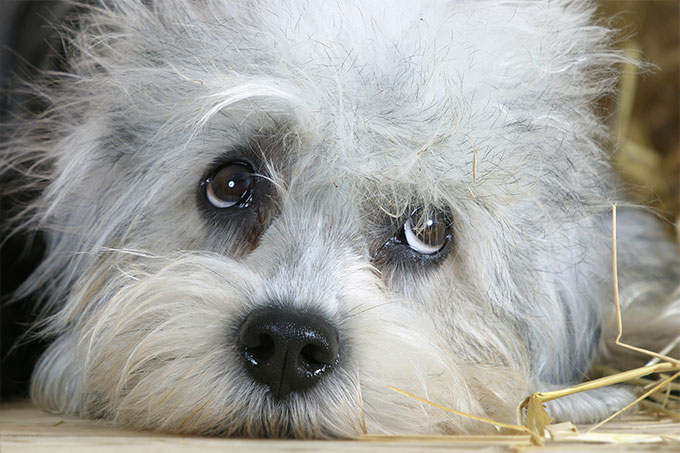
-
Dandie Dinmont Terrier Dog Breed Picture
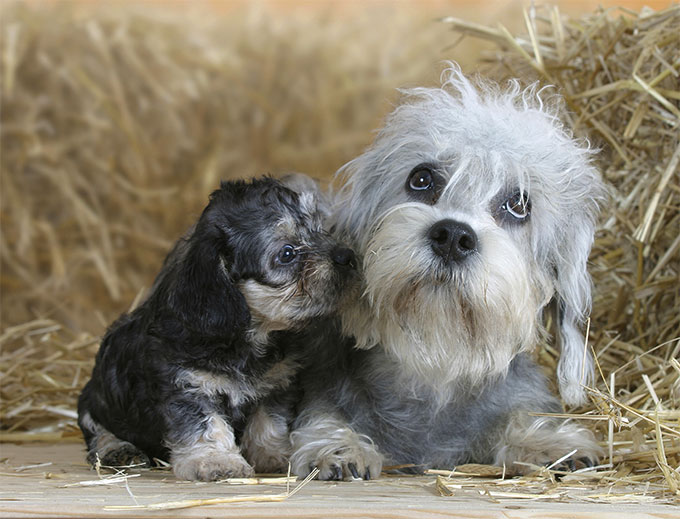
-
Dandie Dinmont Terrier Dog Breed Picture
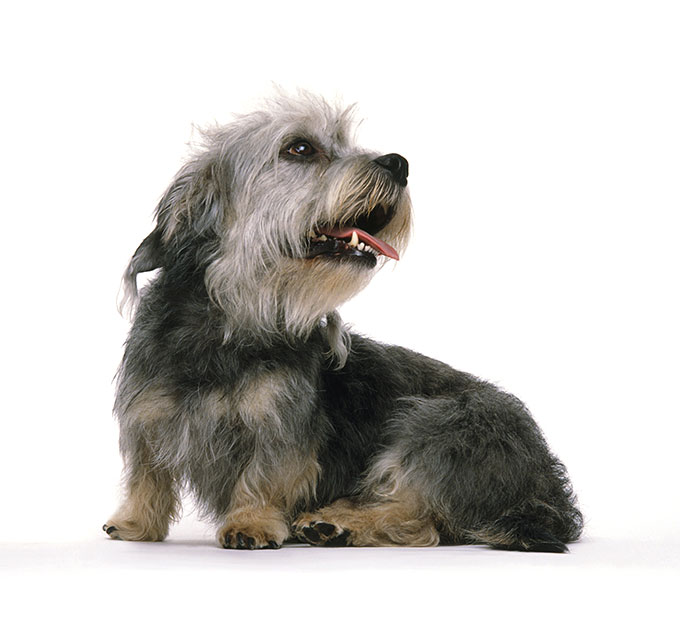
-
Dandie Dinmont Terrier Dog Breed Picture
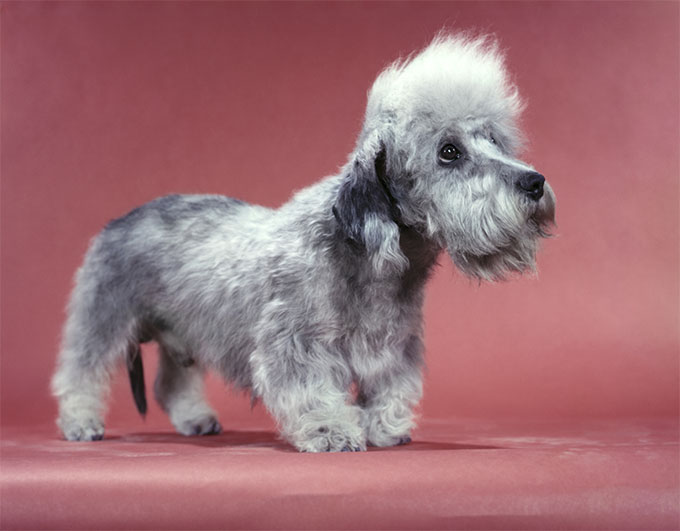
-
Dandie Dinmont Terrier Dog Breed Picture
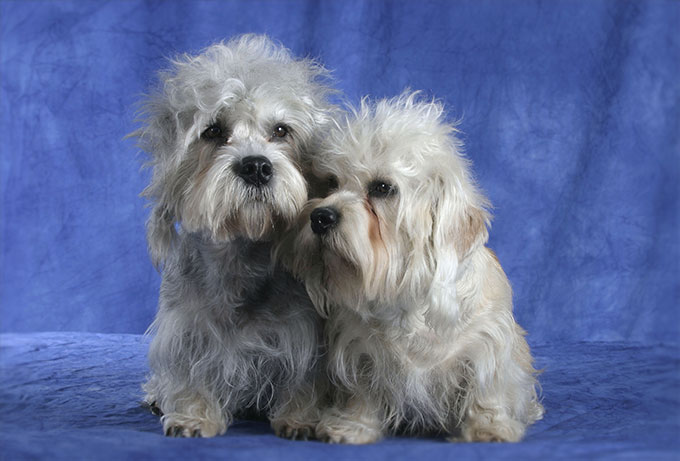
-
Dandie Dinmont Terrier Dog Breed Picture

-
Dandie Dinmont Terrier Dog Breed Picture

-
Dandie Dinmont Terrier Dog Breed Picture
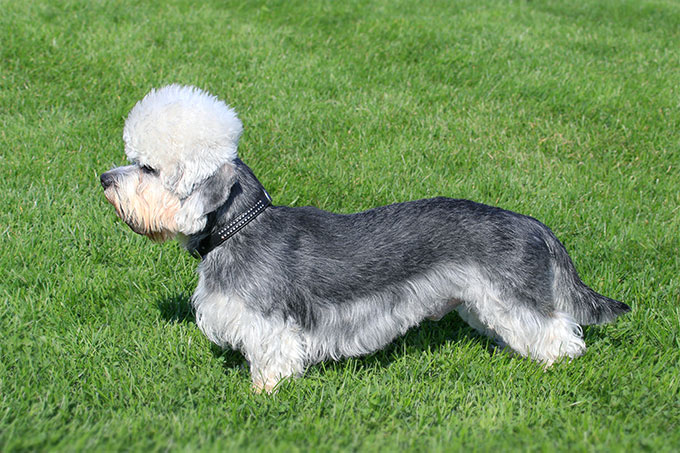
-
Dandie Dinmont Terrier Dog Breed Picture
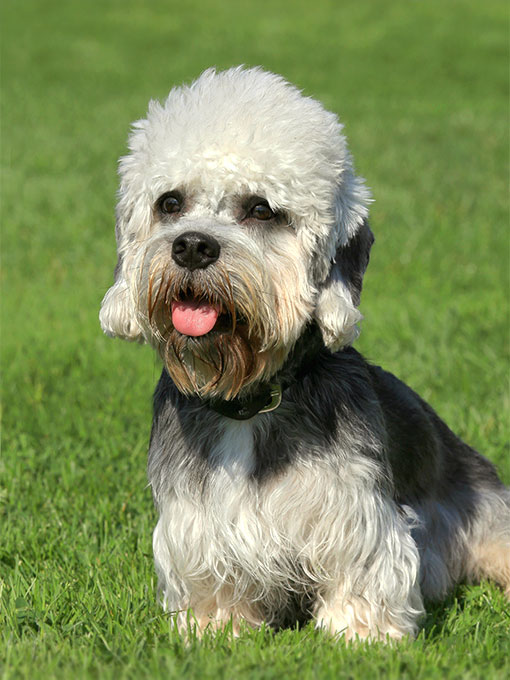
-
Dandie Dinmont Terrier Dog Breed Picture

